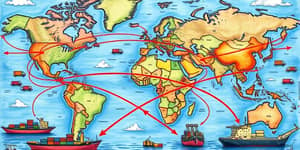
In a world reshaped by rapid change and shifting power dynamics, the pursuit of growth has taken on new urgency. From the sun-drenched fields of Africa to the bustling tech hubs of Asia, nations are competing in an intricate unprecedented velocity of change. Understanding which countries are leading the charge and the forces propelling them forward can offer insights for investors, policymakers, and citizens alike.
Based on the latest projections, several countries are poised to achieve extraordinary growth rates this year. Below is an overview of the top performers in 2025 according to real GDP growth estimates:
The data reveals a clear pattern: fastest-growing economies in 2025 are overwhelmingly centered in Africa and Asia, with a handful of outliers across other continents. This distribution underscores both the opportunities and challenges inherent in today’s globalized landscape.
Growth is not confined to a single corner of the globe. Instead, specific regions are emerging as the primary engines of economic expansion, driven by unique resources and strategic initiatives.
Several key forces are catalyzing economic surges across these regions. Unpacking them sheds light on why some countries are racing ahead while others lag behind.
Beyond individual country performance, broader trends are reshaping the global economy and influencing future trajectories.
Amid these surges and shifts, high-level rankings and projections offer additional perspective. India’s ascent to the fourth-largest economy, overtaking Japan, signals a profound realignment in global economic power.
Meanwhile, the world’s average GDP growth is projected at around 3.2% in 2025, emphasizing the standout performance of leading nations. Yet, regional disparities remain stark, highlighting significant opportunities for investment in areas with robust growth and warning of persistent gaps in regions beset by political instability or weak infrastructure.
The latest data paints a compelling portrait of a world in motion. From Africa’s oil fields to Asia’s tech corridors, new centers of dynamism are emerging. Recognizing the factors behind these surges—energy wealth, policy reforms, and cutting-edge technology—can guide smarter investment decisions and policy strategies.
More than just numbers, these trends tell a story of aspiration and resilience. By focusing on collaboration, innovation, and sustainable development, stakeholders can harness this momentum and contribute to a more inclusive and prosperous global economy.
References













